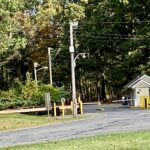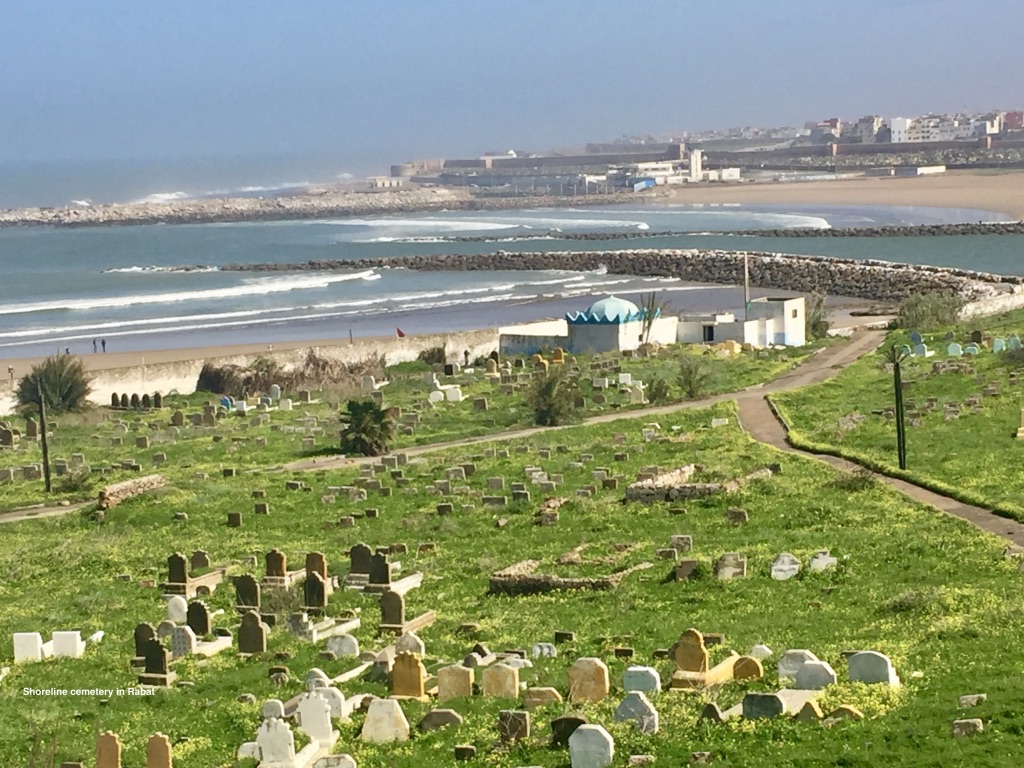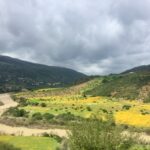Amtrak Texas Eagle, Train No. 21
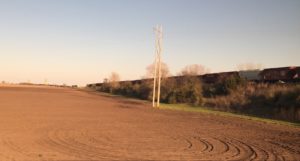
Native plants grow alongside a railroad right of way in central Illinois
A landscape can flush out memories the same way an old familiar song does. It happened to me while traveling on Amtrak’s Texas Eagle train through central Illinois. I was a college student heading to school. I was a young editor reporting on railroad prairies – native plants growing along the ICG Railroad right of way. This land was not only familiar to me but to my ancestors who made a living tilling the soil, acre after flat acre. Like a river returning to its source, Illinois created a current inside of me.
I sat with this feeling for a while.
A few years ago, through a mindfulness class I attended, I learned to stop myself from ruminating. The reason I learned to stop was because ruminating gave me no advantage for appreciating what’s happening in the moment. For that reason, I let the memories go and gazed out at the landscape that presented itself to me on that day, on that train.
During mid spring before the crops have started their growth cycle, the view was equivalent to that of a teenager’s blank stare, as exciting as a pair of dormant brown corduroy pants. If there is not a color called dormant brown, I thought there should be.
My seatmate knew nothing about Illinois. He kept his attention on his laptop. He traveled by airplane from Minneapolis to Chicago to attend a business meeting. He was taking the train from Chicago to Bloomington where he would attend another meeting.
“I could have drove,” he said. “But taking the train I avoid a speeding ticket and I can work. Time is everything, you know.”
An efficient fellow he was. Sitting next to him felt awkward, like the pauses during a bad first date. My limbs tightened. He was wearing clear frame glasses, blue jeans, a sport jacket and a black & white checked shirt. His dark hair was properly cut and combed.
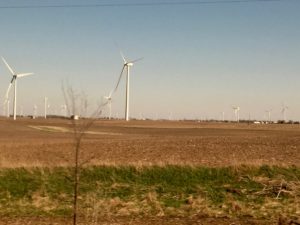
Wind farm in central Illinois.
I saw some tall white wind turbines in the distance turning their trinity of wings slowly in unison. They grew closer and more numerous as the train moved along its track. Illinois ranks fourth among U.S. states for installed wind turbine capacity. But what I was searching for was a field of blooming Prairie Trout Lily.
The lilies were described as a “unique natural resource” by State preservationists. They are perennial plants that grow along the railroad’s right of way – a part of the railroad prairie I mentioned earlier. They bloom for only two weeks in mid spring. Their flowers are light blue-violet, measuring a meager one inch long. However, when they are left undisturbed for many years they create large colonies.
The Prairie Trout Lily became a part of the ICG Railroad’s conservation effort. Guy Lawrence, environmental control engineer at the railroad, said, “One of the ironies of civilization is that the railroads opened up Illinois prairies for settlement, but they are also one of the best protectors of the native prairie flora.”
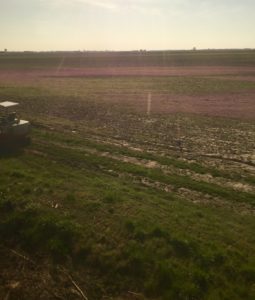
Railroads help protect native prairie plants along the right of way.
The biggest threat to railroad prairies are herbicides and heavy equipment. The State burns these prairie areas every three years and doesn’t use herbicides to control vegetation growth. The railroad designated alternative routes for machinery.
My seatmate got up and asked me to watch his stuff. Strangers are very trusting when on the train. He returned with a package of gum and asked if I wanted a piece. My body remained tight, our conversation short. “Take care,” he said when we reached his destination. I didn’t get his name. In my notes I refer to him as Mr. Everything.
I cannot say for sure that I saw any Prairie Trout Lilies. They are known to grow near Carlinville. I was on heightened alert as we approached the station but I never saw any colonies, just small patches of indiscernible wildflowers that looked like specs of snow. Maybe the lilies were not in bloom. Maybe I would see them on my return trip.

